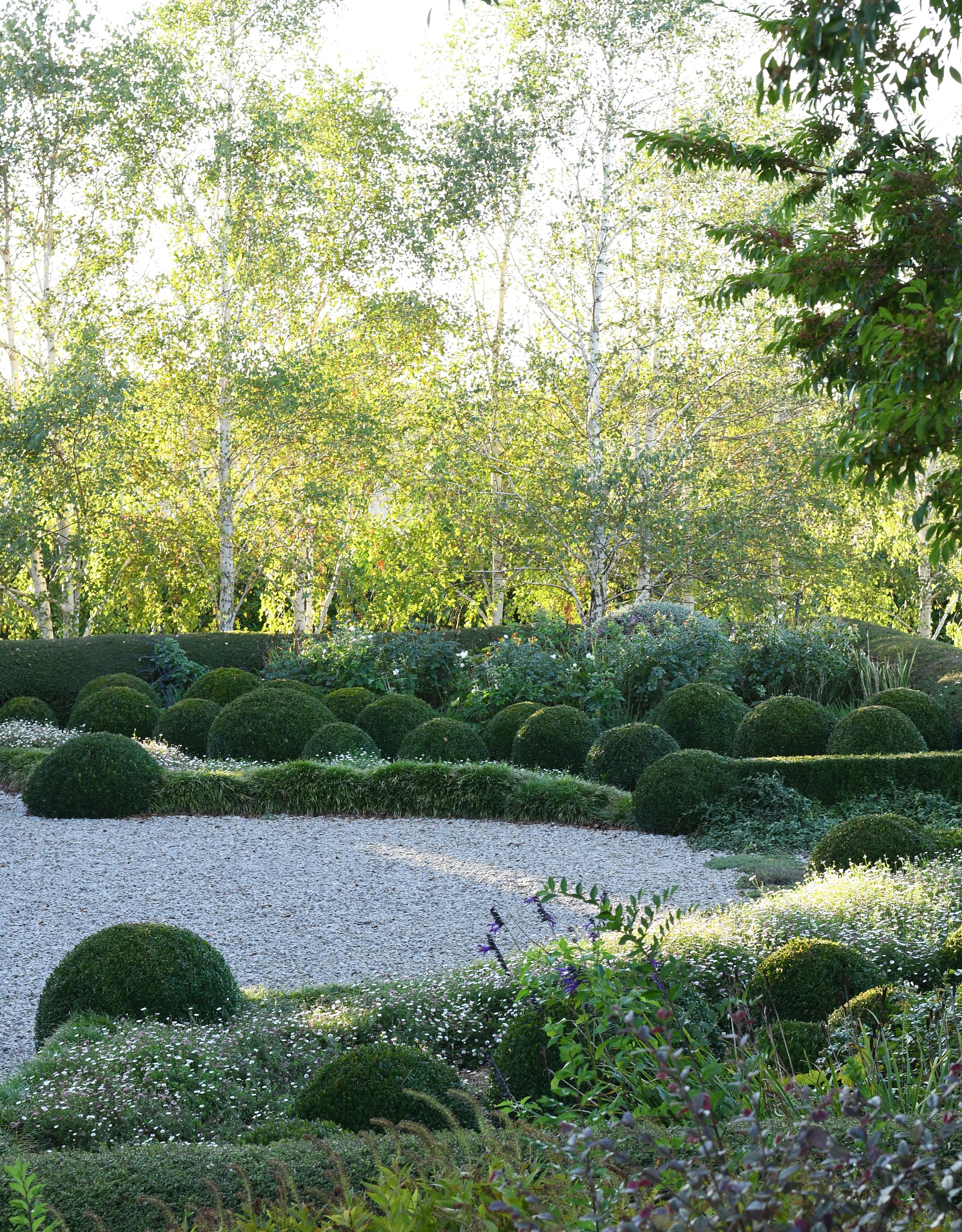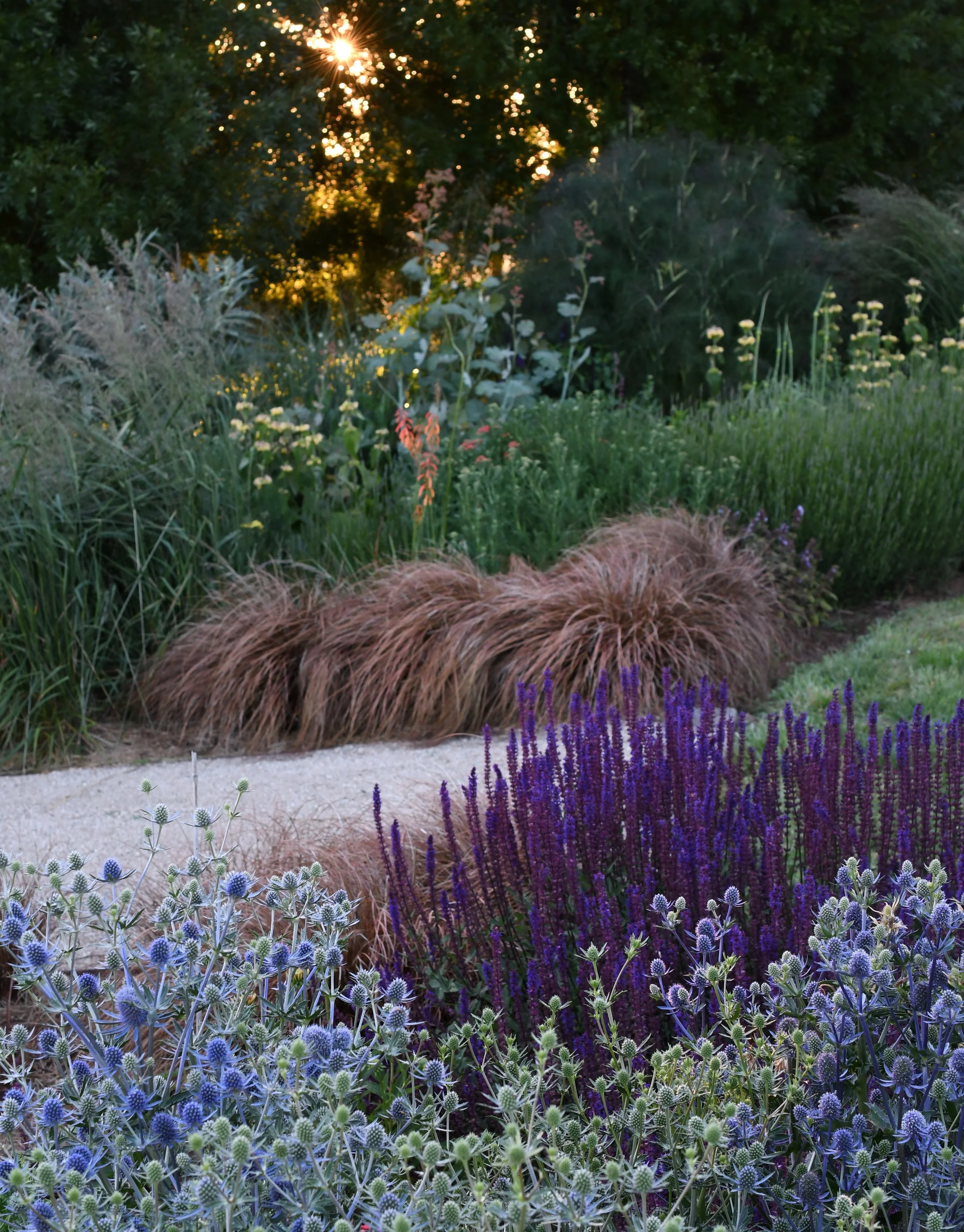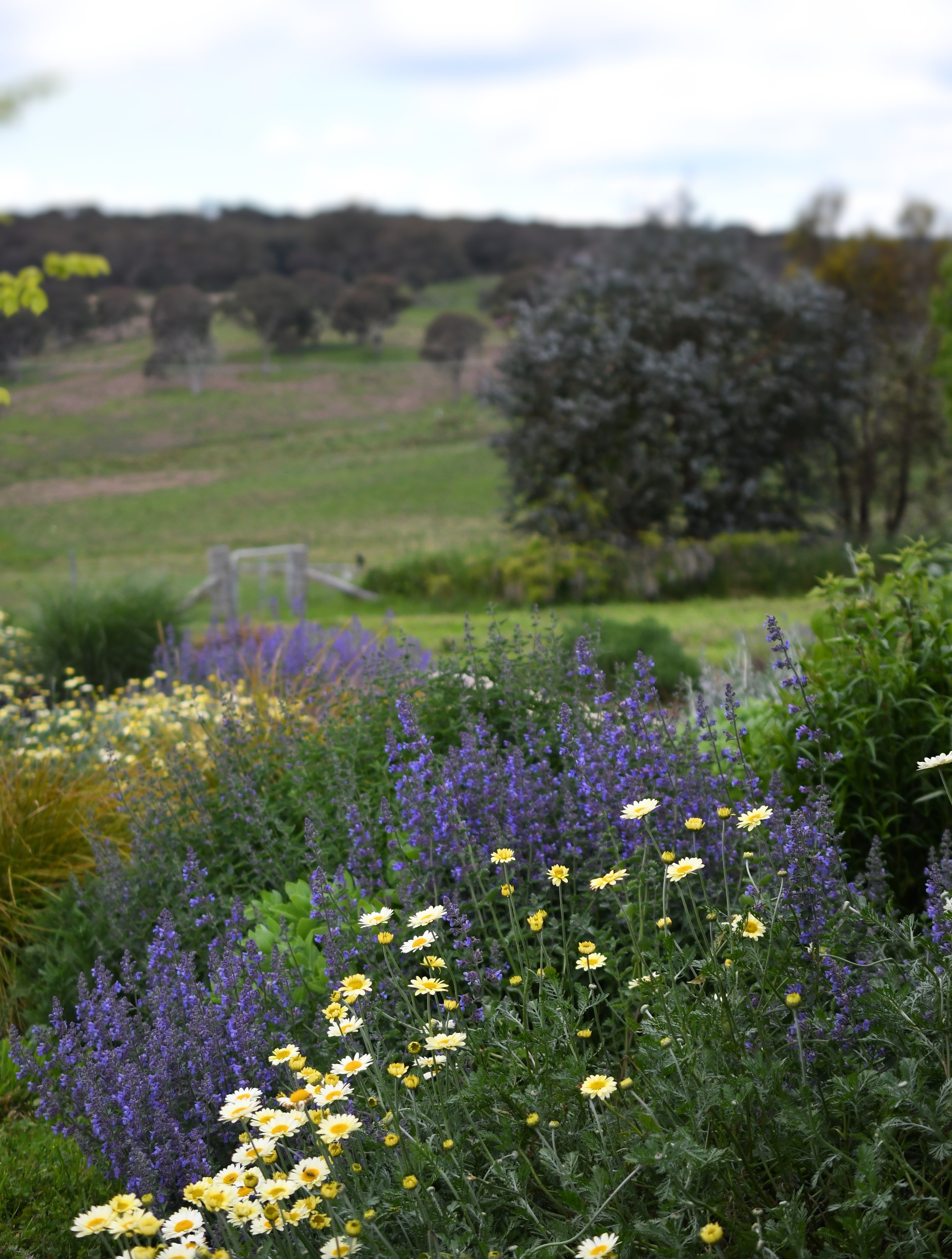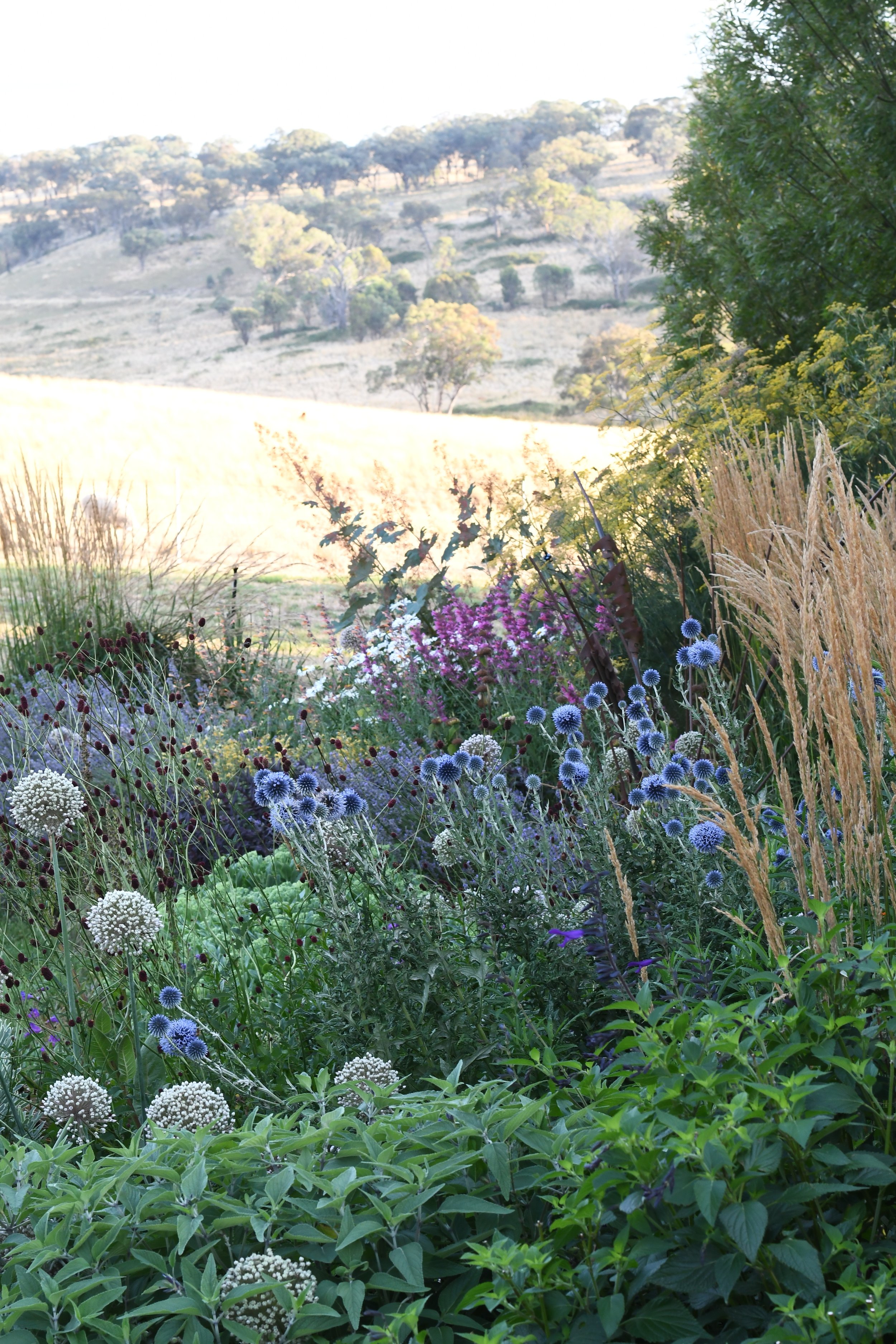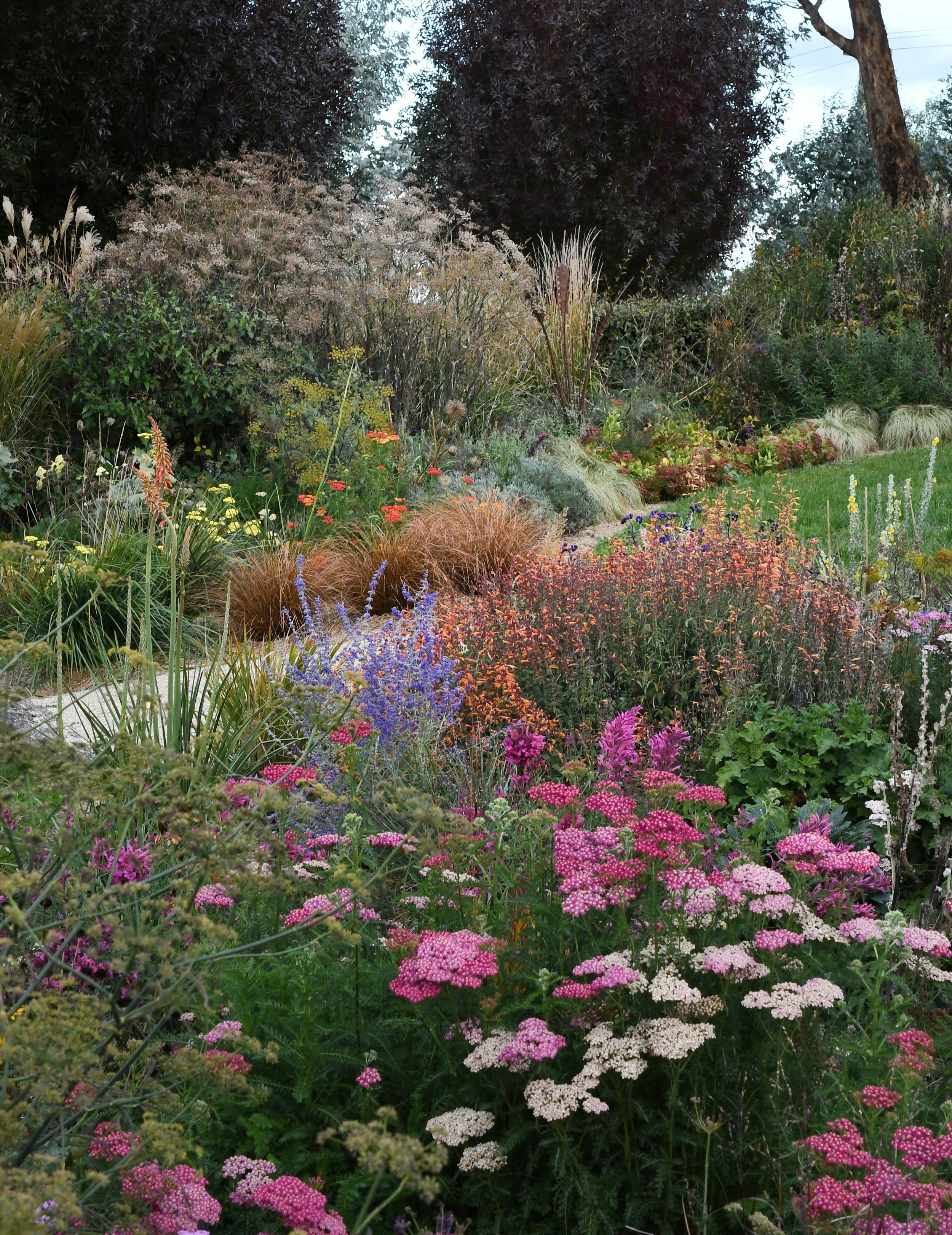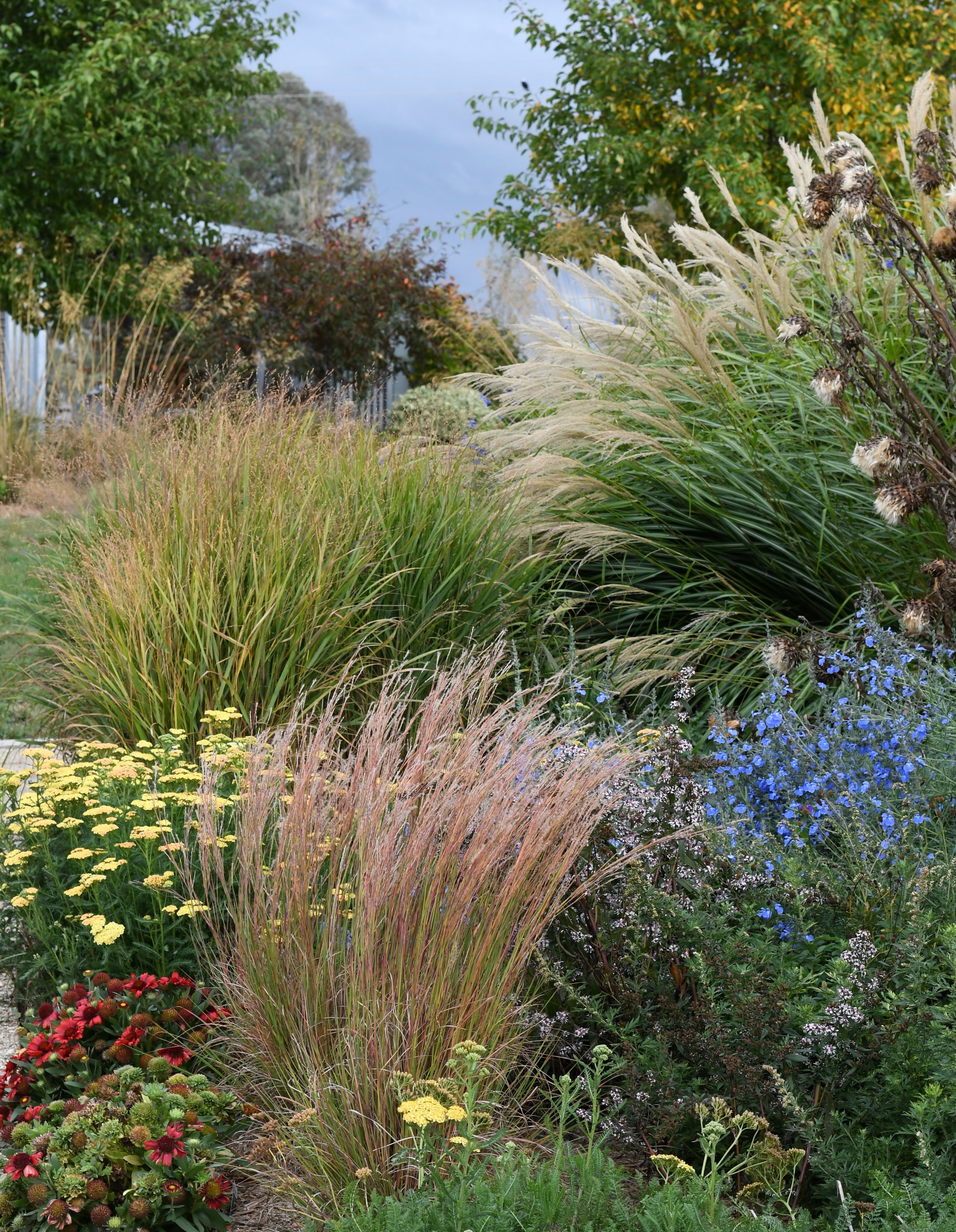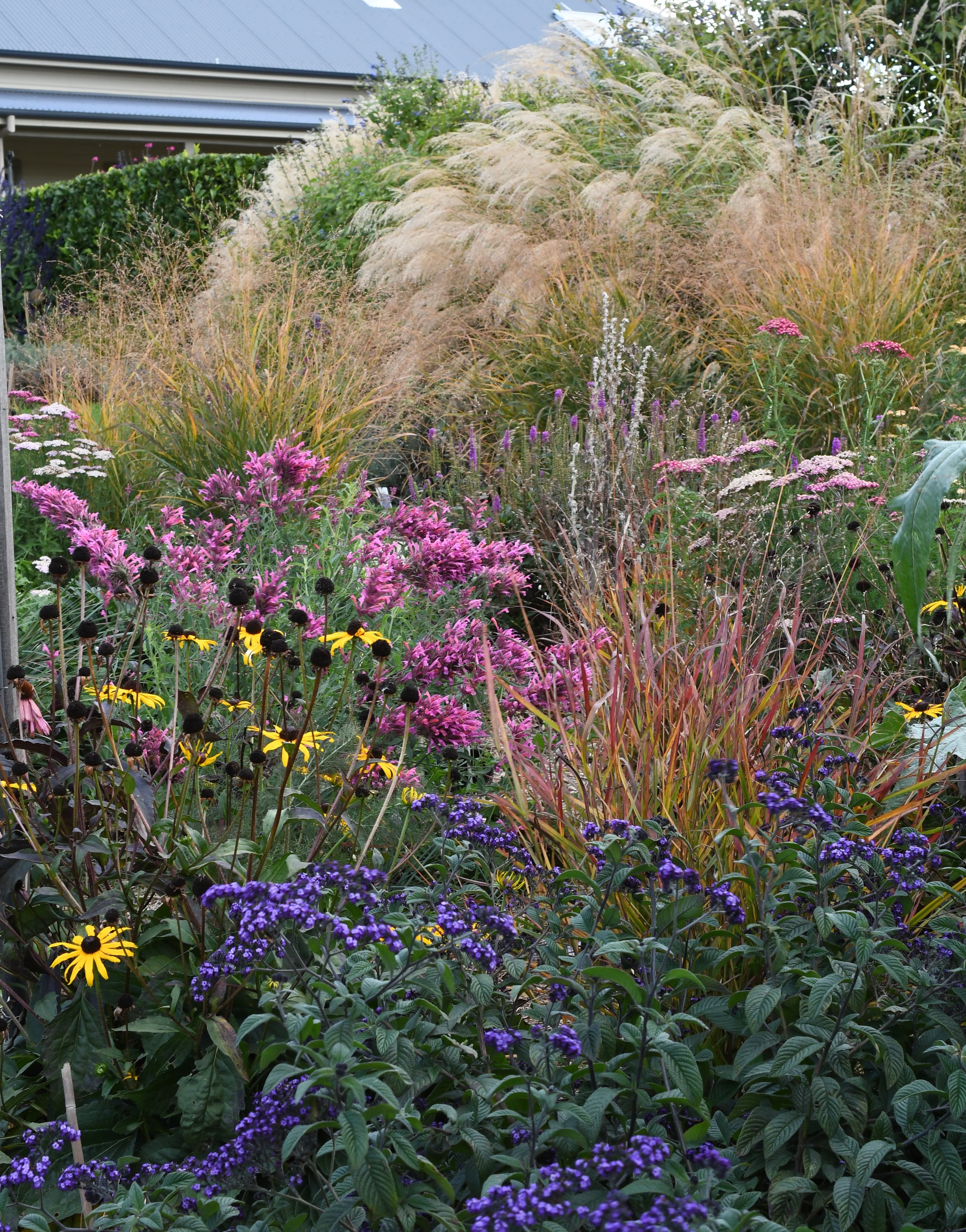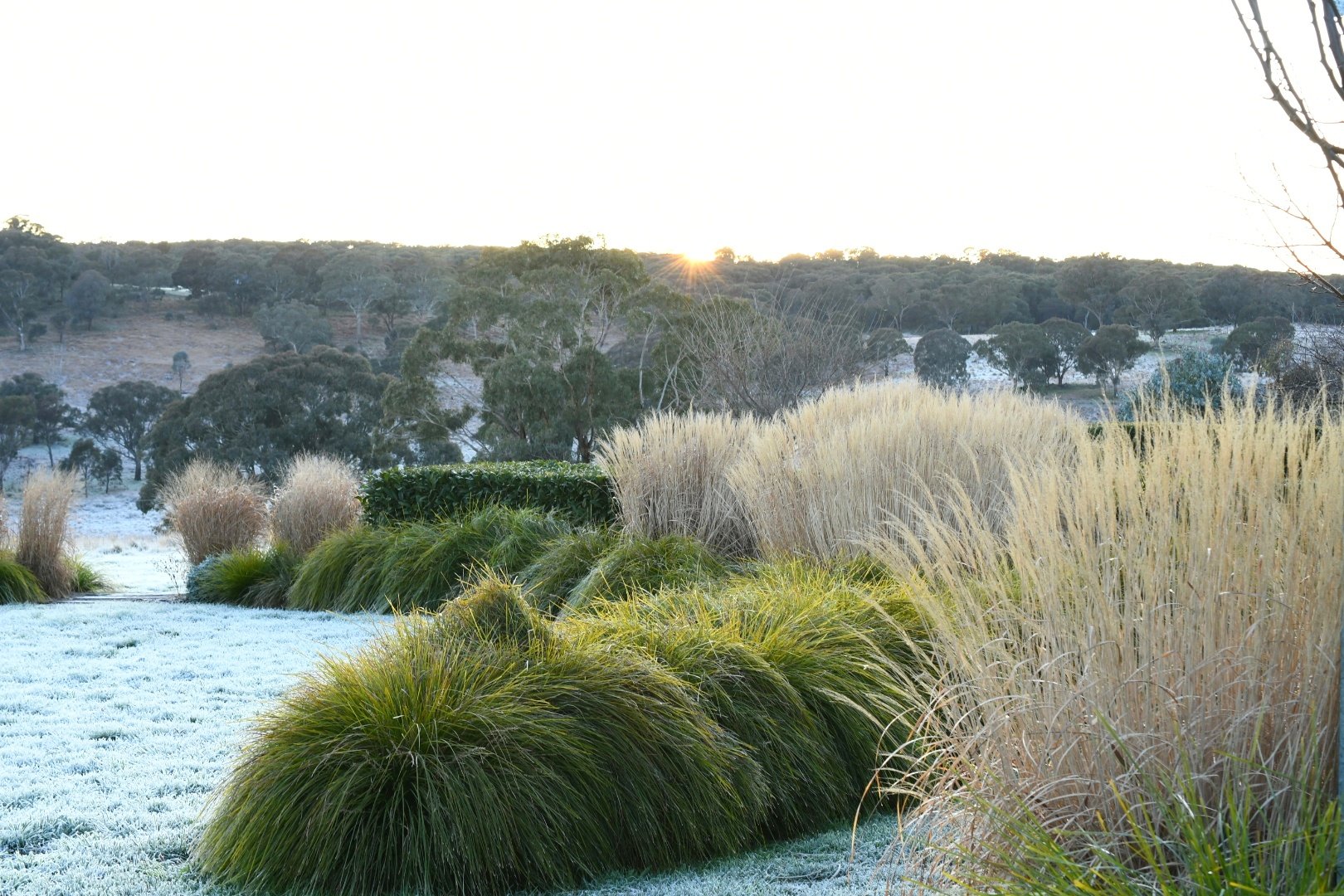THE GARDEN CURATOR
I’ve been happily hooked into Colleen Southwell’s creative and garden world for a few years now. As The Garden Curator she feeds my own personal connections made between growing outside and making inside - winding these practices together for their mutual benefit.
Through her social media and newsletter, Colleen offers a friendly and transparent view of her rural life creating both in the earth and inspired by it. Her background in horticulture and garden design forms a knowledgeable base for her planting, from which her creative eye takes the reins to form a space that offers great pleasure in every season.
I’m not only inspired by Colleen’s tried and tested recipe of hardy beautiful plants, but her creation of structure to support them all through the use of mounding and rounded clipped shrubs. Formality is replaced with a kind of welcoming whimsy that reminds us all that our gardens are there for play as much as anything else.
Enjoy this personal insight into this Australian garden through Colleens own words and photography below.
PS - Colleen is also this months nature inspired artist! You can read her art story here.
Julia xo
Garden profile
GARDENER: Colleen Southwell - The Garden Curator
LOCATION: Near Orange, Central West NSW
Australia
SIZE: 1 hectare
ENVIRONMENT: A cold climate area, around 860m above sea level.
Soil is basalt, though not particularly deep and over shale.
Positioned on a hilltop and exposed, so growing shelter has been key.
@thegardencurator
www.thegardencurator.com.au
Nearly all traditional clipped elements are softened with rounded edges to mirror the rolling landscape and play off against the more textural, loose planting nearby.
I grew up near Orange and my Mum was a keen gardener. It’s a beautiful gardening climate for spectacular changes of seasons and gentler summers than much of Australia, though certainly hotter now than I remember as a child.
Prior to moving here 14 years ago, we’d lived on sheep stations from the vast Hay Plains in the hot and dry far west of the state, to the high country in the Snowy Mountains. These experiences really shaped me as a gardener, and watching country women garden in such extremes was a wonderful grounding in reading and listening to the landscape.
We have made the garden here ourselves, little by little adding and expanding and always learning and adjusting. The landscape is beautiful, rolling hills that turn from spring green to bleached gold in summer, though they come with the challenges of cold and heat. We’re positioned on an exposed hilltop, so the first step was to plant layers of windbreaks and create some feeling of enclosure while trying to also embrace the views.
The garden is a series of spaces outlined by sinuous curves, within which hedges and shrubs define spaces (some rounded rather than squarely cut) and clipped spheres and cloud forms are placed to contrast with feathery and textural perennial plantings. Though there are elements of formality, I’m not really a fan of sharp formal gardens in a rural setting – they can feel very imposed – so any structure has been softened by rounded forms and sweeping arcs that mirror the hills. Hardscaping is limited, the focus is always on the garden.
These garden ‘bones’ define beds filled with perennials and a lot of ornamental grasses, chosen as much for their texture, movement and ability to catch the light, as for their colour. More and more I’m using strong vivid colours and fewer pastels, as rich jewel colours appear less washed out in our harsh summer light. The planting is heavily focused on seasonal change - the constant changes of the light and colour while embracing the textural changes throughout the year.
I want the garden to feel soft and welcoming, a mix of structure and wildness. For me the garden is driven by an evolving story – both ours as a family and the many little lives we share the place with, the birds and insects. Everything we do in the garden here is as much for them as it is for us – creating safe habitat and food sources, layers and thickets of planting. Now they nest in pots beside the doors and sit on the arms of our chairs on the verandah – there’s a sense of trust, we respect them and they respect us. They are a constant source of joy and a blessing!
IMAGES : SPRING
The longer swathes of soft hedging is Lonciera nitida, balls are Buxus sempervirens with Iris siberica and white flowering Heuchera americana happily juxtaposed against their smooth lines. The strappy edging foliage is mondo grass.
“The garden is a series of spaces outlined by sinuous curves, within which hedges and shrubs define spaces (some rounded rather than squarely cut) and clipped spheres and cloud forms are placed to contrast with feathery and textural perennial plantings. ”
The informal tall hedge is Viburnum tinus and the rounded cloud hedging is Lonicera nitida.
EXPERIENCE
When our two boys (now 17 and 19) were tiny I retrained in horticulture and began working as a landscape designer. All my work was hand drawn and fully rendered in watercolour. I found something grounding about that connection of hand to paper. It was also the foundation of the artwork I do now.
I come from a gardening and creative family, so I have always had the understanding that making a garden is the growing of home. It’s not about the garden being a showpiece, far from it, but rather a place that feeds and enriches us – mind, body and soul. As much as I loved design work, I always gravitated towards clients who were keen to sink hands into soil to learn and embrace the garden, rather than those seeking something to be seen but not touched, and cared for by others.
Though I am now essentially full-time in my art practice I do share my gardening path through my newsletters, website, social media and workshops teaching my approach to storytelling and meaningful garden-making. My business The Garden Curator brings together my art practice and gardening paths and aims to encourage slow and mindful engagement with our gardens and the gifts they give. Curator comes from a latin word meaning care – that’s what it’s all about!
IMAGES : SUMMER
The delightful blooms of smoke bush (cotinus) and a view of the minimal hardscaping in the garden.
Salvia’s ‘Amistad’ and ‘Indigo Spires’ pair beautifully with the oat-coloured grass Calamagrostis ‘Karl Foerster’.
Eryngium and Salvia ‘Caradonna’ provide a fascinating contrast in form and colour against the Carex ‘Brunette’ behind. .
Verdant early summer with islands of tough and sculptural Phlomis russeliana lighting up the planting.
“I come from a gardening and creative family, so I have always had the understanding that making a garden is the growing of ’home’. It’s not about the garden being a showpiece, far from it, but rather a place that feeds and enriches us – mind, body and soul. ”
Butter-coloured daisy Anthemis ‘Susanna Mitchell’ paired with Nepeta ‘Otway Towers’.
Globes of allium and echinops playoff against the grasses and soft perennial foliage.
Smooth vs airy and textural is a common theme of Colleens planting. Clipped Teucrium fruticans with Stipa gigantea ‘Beth Chatto Form’.
“I encourage new gardeners to think more about the growing of ‘place’ - a gradual evolution of both garden and gardener. Leave the quest for perfection behind, and understand that a garden is a living and constantly changing being.”
Grasses Miscanthus ‘Adagio’ with the Australian native grass Lomandra ‘Tanika’
SPECIAL CONSIDERATIONS
The greatest challenge here is water. Once considered a ‘safe’ rainfall area, we now have extremes of wet and dry years. The garden has been grown to cope as well as possible with drought – good organic mulch, dry hardy planting, limited watering, and only a tiny patch of watered lawn – the rest is simply mown paddock grass that browns off when water is limited.
Almost all beds have been created using a no-dig approach, layering the soil with cardboard and newspaper, compost and lucerne hay, and leaving the soil structure intact. Interestingly the beds done this way have established much more quickly than those cultivated first. We have also worked with the natural rise and fall of the site, only levelling areas immediately adjacent to the house. It’s been a softly softly approach. A garden should be a partnership with the landscape and the life we share it with, not a firmly pressed thumbprint!
I do 99% of the garden work myself, with occasional help with heavy jobs from my husband and boys. Twice a year I have help cutting the big hedge around the veggie patch (I can’t do ladders!), but otherwise, I do it all when I can, though I’m relaxed with timing. It just gets done when it gets done! It’s rarely perfectly groomed and I don’t expect it to be so, that’s the reality for most gardeners, and it’s healthy. It ebbs and flows with us.
IMAGES : AUTUMN
STAND OUT PLANTS
I love perennials!
My favourites used here are salvias, sedum, rudbeckia, veronica, phlomis, echinops, eryngium, leonotis, achillea, lysimachia, heuchera, cardoon and many more.
Ornamental grasses are a favourites too.
They are fabulous for blurring the line between the garden and paddocks beyond – miscanthus, panicum, Stipa gigantea, calamagrostis, carex, and our native lomandra.
I adore their burnished gold and copper against stormy skies and bleached paddocks, particularly when paired with the deep rich blues of salvias. They are also wonderful for texture, set against large clipped forms of teucrium.
It’s the contrasts of forms in planting that I love the most – feathers against solid forms, the deeply textured foliage of cardoon with the mist of panicum or melianthus. The other thing I couldn’t live without is plants that catch the light, particularly early morning or evening. It’s a magic ingredient often overlooked.
“More and more I’m using strong vivid colours and fewer pastels, as rich jewel colours appear less washed out in our harsh summer light. The planting is heavily focused on seasonal change - the constant changes of the light and colour while embracing the textural changes throughout the year.”
The striking dark seedheads of Phlomis russeliana amid salvias, grasses, sedum and achillea.
Jewel-coloured perennials are offset by the autumn show of grasses
Grasses are Miscanthus transmorrisonensis behind, Panicum ‘Autumn Glory’ on left, Andropogon ‘Blaze’ centre front with Agastache ‘Nadine’, Rudbeckia ‘Goldsturm’, and purple Heliotrope.
Magnificent cardoon seedheads.
Euphorbia ‘Silver Swan’ lights up the fading autumn tones.
ADVICE FOR NEW GARDENERS
Beginning a garden without experience is daunting for many people, and I think people can feel pressure to have a perfectly designed and manicured ‘space’. I encourage new gardeners to think more about the growing of ‘place’ - a gradual evolution of both garden and gardener. Leave the quest for perfection behind, and understand that a garden is a living and constantly changing being. We are just one part of it, our role is to guide and care. Don’t feel pressured by fashion, be guided instead by your environment and the way you want your garden to feel – there’s much to be lost if we focus on aesthetics alone. And grow what you love, the things that tell your story, plants shared.
IMAGES : WINTER
Grasses are Miscanthus transmorrisonensis behind, Panicum ‘Autumn Glory’ and Andropogon ‘Blaze’ centre front with cardoon and achillea seedheads.
Grasses Miscanthus ‘Adagio’ with the Australian native grass Lomandra ‘Tanika’ (in the row)
SOURCES OF INSPIRATION
The most influential for me would have to be the words and work of Edna Walling, and Trisha Dixon’s works about both Edna and her own gardening path. I can’t go past any book photographed by Claire Takacs, or the work of Beth Chatto, Noel Kingsbury and Piet Oudolf – there are so many more I couldn’t list them all!
I’m book obsessed, and am thinking of converting one of the kids rooms into a library…..
Sitting by the fire with a good gardening book is one of life’s greatest pleasures and the gift of winter!
Provided links to plants are chosen by Julia with no bias - simply to connect with the best imagery and information to aid the reader on that plant.
Not affiliate or sponsored links are included - please beware they may contain some seasonal information from other countries that differ from the one you are in!





